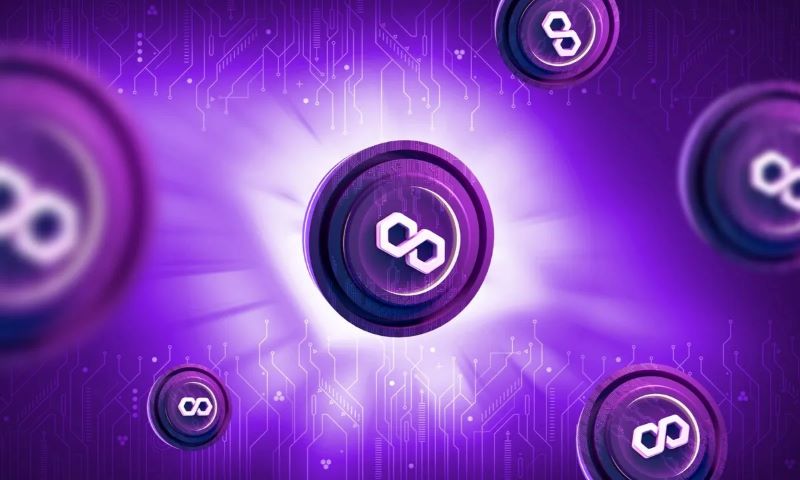What is Polygon crypto? This question has gained significant attention as the Ethereum network faces challenges related to scalability and transaction costs. As we delve into the future of Ethereum scaling, we’ll explore how Polygon is set to revolutionize the way we interact with decentralized applications and improve the overall user experience in the crypto space.
What is polygon crypto?
Polygon, formerly known as Matic Network, is a scaling solution for Ethereum designed to enhance scalability and reduce transaction costs on the Ethereum platform. It functions as a Layer 2 solution on top of the Ethereum blockchain, enabling developers to build and deploy decentralized applications (dApps) with better performance and faster transaction processing capabilities. For those new to this, the question “What is Polygon crypto?” is a natural starting point.Key highlights of Polygon:
- Ethereum Compatibility: Polygon is designed to be fully compatible with Ethereum, allowing dApps already developed on Ethereum to easily migrate to using Polygon without significant code changes. This compatibility is a core aspect of what is Polygon crypto, making it an attractive option for Ethereum developers.
- Reduced Transaction Costs: One of the major challenges Ethereum users face is high transaction fees. Polygon helps mitigate this cost by providing faster and more efficient transactions. This cost-effectiveness is another crucial feature of what is Polygon crypto and its appeal to users.
- Plasm and Plasma Chain Technology: Polygon utilizes Plasma technology, enabling the creation of separate sidechains for each dApp, enhancing scalability and reducing the load on the Ethereum mainnet.
- Thriving Ecosystem: Polygon has created a diverse ecosystem with various dApps and projects, ranging from decentralized finance (DeFi) to gaming and NFTs, creating numerous opportunities for users and developers.
- Security: Polygon not only improves transaction speed and cost but also maintains high security by leveraging Ethereum’s smart contract technology. The security aspect is a vital component of what is Polygon crypto and its trustworthiness.
Why Does Ethereum Need to Scale?
Ethereum is one of the most well-known and powerful blockchain platforms, notable for its ability to support smart contracts and decentralized applications (dApps). However, its rapid growth and increasing usage demand have posed significant challenges for Ethereum, particularly the issue of scalability. To fully appreciate the need for scaling, it’s important to understand “What is Polygon crypto?” – a Layer 2 scaling solution designed to address these challenges.Here are the main reasons why Ethereum needs to scale:
- High Transaction Fees: One of the biggest problems Ethereum users face is the rising gas fees (transaction fees). As the number of transactions increases, especially during peak periods like ICOs or DeFi booms, transaction costs can escalate significantly, making small transactions unfeasible. Scaling the network will help reduce these costs, making Ethereum more user-friendly.
- Slow Transaction Speeds: The current Ethereum network can only process around 30 transactions per second (TPS). As the number of users and dApps grows, the network easily becomes congested, leading to longer transaction confirmation times. This not only creates difficulties for users but also impacts applications that require fast transaction speeds to operate effectively.
- Limited Scalability: Ethereum’s current scalability is a major factor hindering its growth. As new dApps and services are built, if the network cannot scale to meet demand, it will be difficult for developers to maintain and grow their applications. Scaling Ethereum is necessary to support a thriving and sustainable ecosystem. Solutions like Polygon, which address the question “What is Polygon crypto?”, are crucial in tackling this scalability challenge.
- Increased Competition: With the emergence of many other blockchains like Binance Smart Chain, Solana, and Polkadot, Ethereum is facing fierce competition. These other platforms often offer lower transaction fees and faster speeds. To maintain its leading position, Ethereum needs to expand its capabilities, improve speed and cost to attract and retain users. The question “What is Polygon crypto?” becomes even more relevant as Ethereum seeks to compete with these emerging platforms.
- Support for Decentralized Applications (dApps): With the rise of decentralized applications, Ethereum needs to be able to scale to meet the demands of developers. The platform needs to support complex dApps that require numerous transactions and large data processing without encountering congestion. Understanding “What is Polygon crypto?” and its role in scaling Ethereum is crucial for the continued growth of the dApp ecosystem.
Read more: https://blockchainsolve.com/what-is-polygon-crypto/

